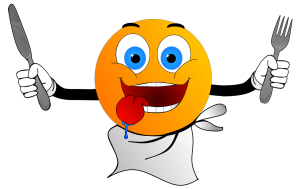 Hunger is a sensation that motivates the consumption of food.
Hunger is a sensation that motivates the consumption of food.
Hunger sensation typically manifests after only a few hours without eating and is generally considered to be unpleasant.
Satiety occurs between 5 and 20 minutes after eating.
The term hunger is also the most commonly used to describe the condition of people who suffer from a chronic lack of sufficient food and constantly or frequently experience the sensation of hunger, and can lead to malnutrition.
A healthy, well-nourished individual can survive for weeks without food intake, with claims ranging from three to ten weeks.
Satiety is the opposite of hunger; it is the sensation of feeling full.
The physical sensation of hunger is related to contractions of the stomach muscles.
Hunger pangs are believed to be triggered by high concentrations of the ghrelin hormone.
The hormones peptide YY and leptin can have an opposite effect on the appetite, causing the sensation of being full.
Ghrelin can be released if blood sugar levels get low.
Hunger related stomach contractions can be especially severe and painful and children and young adults.
Hunger pangs can be made worse by irregular meals.
Older people may feel less severe stomach contractions with hunger, but still suffer the secondary effects resulting from low food intake: these include weakness, irritability and decreased concentration.
Prolonged inadequate nutrition causes increased susceptibility to disease and reduced ability for the body to heal.
Short-term regulation of hunger and food intake is multifactorial, involving neural signals from the GI tract, blood levels of nutrients, GI tract hormones, and psychological factors.
Gut content is also evaluated through vagal nerve fibers that carry signals between the brain and the gastrointestinal tract (GI tract).
Stretch receptors work by inhibiting appetite upon distention of the GI tract by sending signals along the vagus nerve afferent pathway and inhibiting the hunger center.
The hormones insulin and cholecystokinin (CCK) are released from the GI tract during food absorption and act to suppress the feeling of hunger.
Cholecystokinin suppresses hunger because of its role in inhibiting neuropeptide Y.
Glucagon and epinephrine levels rise during fasting and stimulate hunger.
Ghrelin, a hormone produced by the stomach, is an appetite stimulant.
Psychological processes appear to be involved in regulating short-term food intake: liking and wanting.
Liking refers to the palatability or taste of the food.
Wanting is the motivation to consume the food.
Both are reduced by the repeated consumption of foods.
Wanting food may be due to change in memory-related processes, and can be triggered by a variety of psychological processes.
The regulation of appetite is referred to as the appestat.
Leptin, a hormone produced by the adipose tissue provides negative feedback.
Leptin, a peptide hormone that affects homeostasis and immune responses.
Lowering food intake can lower leptin levels in the body, while increasing the intake of food can raise leptin levels.
Appetite regulation is an immensely complex process involving the gastrointestinal tract, many hormones, and both the central and autonomic nervous systems.
Gut hormones regulate many pathways in the body can either stimulate or suppress appetite.
Ghrelin stimulates appetite, whereas cholecystokinin and glucagon-like peptide-1 (GLP-1) suppress appetite.
The arcuate nucleus of the hypothalamus, a part of the brain, is the main regulatory organ for the human appetite.
Many brain neurotransmitters affect appetite, especially dopamine and serotonin.
Dopamine acts primarily through the reward centers of the brain.
Serotonin primarily acts through effects on neuropeptide Y (NPY)/agouti-related peptide (AgRP) to stimulate appetite and proopiomelanocortin (POMC) to induce satiety neurons located in the arcuate nucleus.
Similarly, the hormones leptin and insulin suppress appetite through effects on AgRP and POMC neurons.
Hypothalamocortical and hypothalamolimbic neurologic projections contribute to the awareness of hunger.
The somatic processes controlled by the hypothalamus include vagal tone, the activity of the parasympathetic autonomic nervous system, stimulation of the thyroid’s thyroxine that regulates the metabolic rate, and the hypothalamic-pituitary-adrenal axis along with a large number of other mechanisms.
Opioid receptor-related processes in the nucleus accumbens and ventral pallidum affect the palatability of foods.
The nucleus accumbens (NAc) is the area of the brain that coordinates neurotransmitter, opioid and endocannabinoid signals to control feeding behavior.
Signalling molecules inside the NAc shell modulate the motivation to eat and the affective reactions for food.
These molecules include the dopamine (DA), acetylcholine (Ach), opioids and cannabinoids and their action receptors inside the brain, dopamine, muscarinic and μ-opioid receptor (MOR) and CB1 receptors respectively.
The hypothalamus senses external stimuli mainly through a number of hormones such as leptin, ghrelin, PYY 3-36, orexin and cholecystokinin.
These hormones all modify the hypothalamic response, and
are produced by the digestive tract and by adipose tissue (leptin).
Systemic mediators, such as tumor necrosis factor-alpha (TNFα), interleukins 1 and 6 and corticotropin-releasing hormone (CRH) influence appetite negatively, explaining why ill people often eat less.
Leptin, a hormone secreted exclusively by adipose cells in response to an increase in body fat mass, is an important component in the regulation of long term hunger and food intake.
Leptin serves as the brain’s indicator of the body’s total energy stores.
Leptin functions: Suppresses the release of neuropeptide Y (NPY), which in turn prevents the release of appetite enhancing orexins from the lateral hypothalamus.
This decreases appetite and food intake, promoting weight loss.
Rising blood levels of leptin do promote weight loss to some extent, its main role is to protect the body against weight loss in times of nutritional deprivation.
Insulin effects long-term hunger and food intake regulation.
The biological clock, which is regulated by the hypothalamus, stimulates hunger.
Cerebral loci, as from the limbic system and the cerebral cortex, project on the hypothalamus and modify appetite, explaining why with depression and stress, energy intake can change quite drastically.
